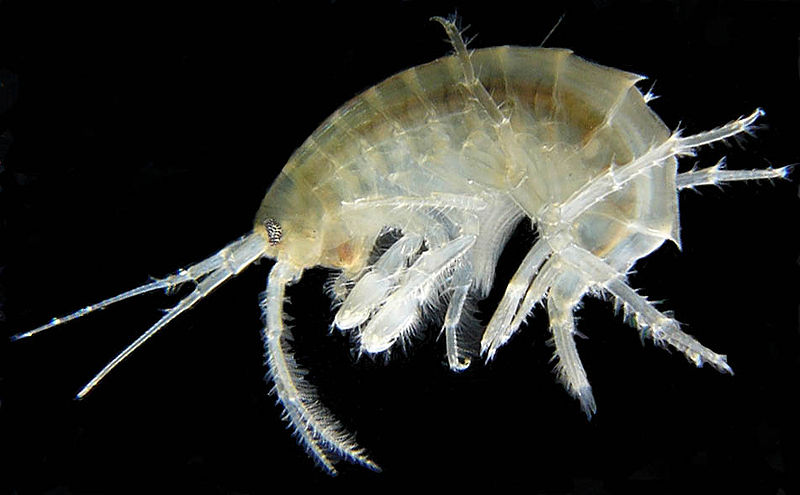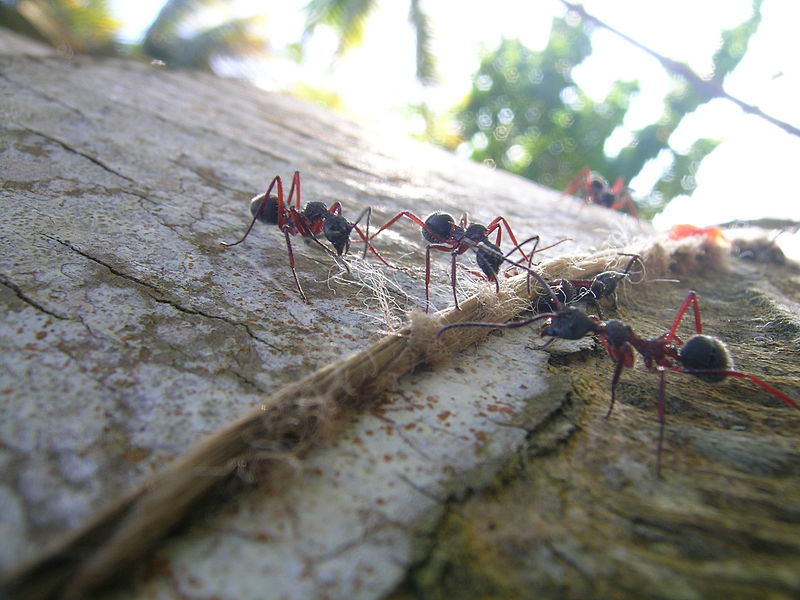Over the past several months, I’ve spent much time collecting aquatic insects with my nephew, who is quite the intense little naturalist (please see photos – I’m having as much fun as he!). In addition to our usual haul of backswimmers, predacious diving beetles, dragonfly larvae and the like, this season I was pleased to find a healthy population of Brown Water Scorpions (Ranatra fusca). Combining characteristics of mantids, walking sticks and scorpions, all modified for life underwater, these amazing creatures are simple to keep and fascinating to get to know.
Aquatic Insects as Pets
In years past, I set up aquatic insect exhibits for several zoos and public aquariums, but it seems that interest remains rather low among private invertebrate keepers. This surprises me, as their range of lifestyles rivals that of their land-bound cousins, and never fails to astonish me even after all these years. Please see this article for information on aquatic beetle care, and watch for others in the future.
Natural History
Classification
Water Scorpions are classified in the order Hemiptera and the family Nepidae. Members of the order Hemiptera, known as True Bugs, have sucking, beak-like mouthparts. Examples include cicadas, giant water bugs, backswimmers, leafhoppers and aphids. Approximately 270 Water Scorpion species have been described worldwide, 13-15 of which inhabit North America. No doubt many others are awaiting “discovery”.
Physical Description
The body of the Brown Water Scorpion resembles that of a terrestrial stick insect and is yellowish-tan to dark brown in color. Others, including those in the North American genus Nepa, are flattened in appearance. The front legs are raptorial (designed for grasping) and superficially similar to those of a praying mantis. Unlike a mantis, however, the terminal segments of the Water Scorpion’s front legs fit into a groove when not in use, and swing out like folding knives when needed. These hook-like leg tips can be seen in the photo showing a Water Scorpion poised just below a guppy.
The middle and hind legs are about as long as the body, and paired breathing tubes are situated at the end of the abdomen. This species reaches 1.75 inches in length (to approximately 3 inches including the breathing tube).
Water Scorpions can fly, but do so only rarely.
Amazing Organs
Three pairs of disc-shaped organs on the abdomen, known as false spiracles, enable Water Scorpions to gauge water depth and compensate for changes in water pressure.
Range
From southern Canada through much of the continental USA to northern Mexico.
Habitat
Poorly adapted for swimming, Water Scorpions favor the still waters of ponds, swamps, lake edges and canals, where they remain immobile among plants and sticks. The photo of my nephew “waiting in ambush” shows their typical habitat.
Diet
This voracious carnivore feeds largely upon the body fluids of invertebrates, but will also take small tadpoles, fishes and newts. Water Scorpions are ambush predators, relying upon camouflage when hunting. They lash out with the front legs and subdue prey via salivary fluids injected through the sharp beak. These fluids contain chemicals that tranquilize prey and initiate digestion; food is consumed in liquid form, in the manner of spiders.
Reproduction
Eggs are inserted into living or dead plants, and hatch in 2-4 weeks. The nymphs resemble the adults (incomplete metamorphosis) and mature in 4-6 weeks.
Captive Care
Enclosure
The aquarium should be covered and the water slow-moving. Water Scorpions are poorly-equipped for swimming, and will perish if buffeted by strong currents.
The tank should be well-stocked with plants (preferably live) and sticks that rise to the water’s surface. Water Scorpions breathe by extending the abdominal breathing tubes above the water’s surface, and cannot utilize oxygen dissolved in the water. They will not thrive if unable to station themselves on a plant or stick near the water’s surface.
Filtration and Water Quality
Water Scorpions may be kept in an unfiltered bowl, jar, or aquarium if provided a weekly water change (please see photo of my simple enclosure). Live plants will enhance the aquarium’s appearance and assist in maintaining water quality. If filtration is desired, be sure to avoid strong water currents. Sponge, undergravel, and corner filters are ideal.
Although Water Scorpions inhabit waters that are often subjected to varying pH and ammonia levels, water quality should not be ignored. In this regard, they should be maintained as are tropical fishes (please write in if you need further information). Water used in the aquarium should be treated with chlorine/chloramine removal drops and maintained at pH 6.8-7.2.
Light, Heat and Water Quality
Temperatures of 65-82 F are well-tolerated.
Feeding
Water Scorpions are attracted to prey by movement, and will take small crickets and bits of fish, shrimp and earthworm from tongs. I also offer small guppies, mosquito larvae and blackworms. I’ve not seen them take smaller prey items, but mosquito larvae do disappear (and seem not to be buzzing about the house!).
Compatible Species
In common with many aquatic insects, Water Scorpions will consume smaller individuals of their own species. However, as captive breeding seems not to have been recorded, keeping several in a well-planted aquarium would be worthwhile (reduced temperatures and a shortened light cycle in winter may encourage reproduction).
These slow, deliberate hunters will not get enough food in aquariums housing diving beetles, water boatmen, fishes and other aggressive feeders. In such situations, they must be individually fed via tongs.
Captive Longevity
Adults over-winter and can live for 2 – 2.5 years.
Handling
As you can see from my 4-year-old nephew’s smiling face, Water Scorpions are rather “stiff” and cannot bite if held as illustrated. The long beak seems quite formidable, but several observers report that it cannot pierce human skin (this re Brown Water Scorpions; others not mentioned). I’m wary of aquatic insects, however, as even the smallest predatory species can usually inflict a painful bite. After so many decades of being bitten and stung by creatures large and small, I have no desire to experiment! I advise that you handle via tongs or a net.
What Can I Do?
Insects and other invertebrates occupy every conceivable aquatic habitat, from birdbaths to swamps and even the sea. Running a net or small strainer through just about any bit of available water will yield a treasure trove of interesting creatures, many of which are quite easy to keep and even breed. So get out there and look around, and please feel free to write in with suggested topics, so that I can cover your favorite species.
Further Reading
Video: Australian Water Scorpion
 That Reptile Blog – Reptile, Amphibian and Exotic Pet Care and Information
That Reptile Blog – Reptile, Amphibian and Exotic Pet Care and Information



